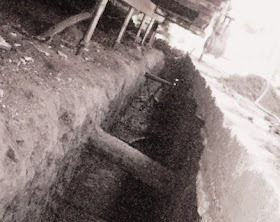The location of different weathering regions are shown in the figure below:
The aggregates are designated as below:
a. 1S
b. 2S
c. 3S
d. 4S
e. 5S
1S class aggregates are considered to be used in following conditions
- Footings
- Foundations
- Columns
- Beams
- Floor slab
That is All concrete members are not exposed to weathering and floor slabs essentially interior slab having any types of covering.
2S class aggregates are considered to apply interior floors having no covering.
- Foundation walls located above ground
- Retaining wall
- Abutments
- Piers
- Girders and beams exposed to weather
4S class aggregates are considered to apply in following conditions:
- Pavements
- Bridges decks
- Driveways
- Curb
- Walks
- Patios
- Garage floors
- Exposed porches and floors
- Water-front structures; any types of concrete member that are frequently subjected to wetting

5S class aggregates are considered in architectural concrete exposed to weathering. 4S class is expose to abrasion as most application are road, bridge and water-front structures.
In case of abrasion requirements, crushed and air-cooled BFS (Blast furnace slag) is not included. The rodded bulk density or unit weight of this material should not be less than 70 lb/ft3.
While determining material finer than passing No.200 sieve, expressed as percentage, following conditions are considered:
a. This value may be increased 1.5 times when the material is free from shales or clay.
b. If fine aggregates used in concrete have particles passing No. 200 sieve is less than that specified in ASTM C33, then percentage limit in coarse aggregate can be increased by
L=percentage limit in coarse
aggregate can be increased
P=percentage of sand in concrete
over total aggregate
T=allowable limit of fine
particles in fine aggregate
i.e. 3% for concrete that
subjected to abrasion
5% for all other concrete
A=actual quantity in fine aggregate

























